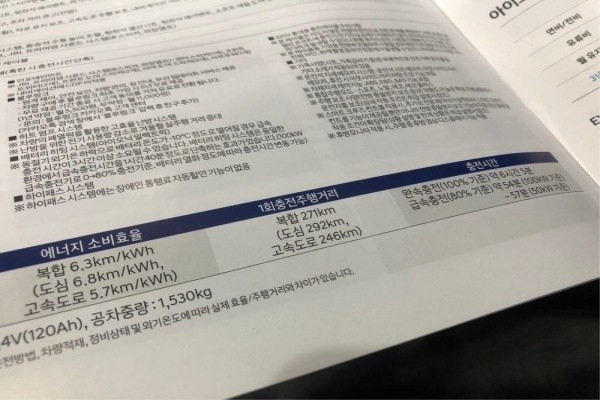It is reported that South Korean automakers and foreign automakers have not been properly informing consumers in South Korea about ranges of their electric vehicles under a cold environment. This is because they have not been obligated to notify consumers about it and only meet certain criteria to obtain a certification for their products. As a result, there has been an increase in number of people who say that automakers need to properly inform consumers about ranges of their electric vehicles under normal temperature and cold temperature and improve rights and interests of consumers.
South Korea’s certification system on electric vehicles’ ranges under normal temperature and low temperature that reflects the country’s climate characteristic where temperature difference between four seasons is large is a key index for government subsidies on electric vehicles. However, most of consumers purchase electric vehicles without knowing vehicles’ ranges under cold weather. Related government departments have also recognized the issue and stated that they would look into possible solutions.
After the Electronic Times examined catalogs and prices of electric vehicles that are currently sold in South Korea, all automakers only displayed ranges of their products under normal temperature (between 20 and 30 degrees) and did not display ranges under low temperature (under 7 degrees). Even energy consumption efficiency labels that are attached to electric vehicles only displayed ranges under normal temperature.
Due to a characteristic of an electric vehicle battery, there can be a difference of 10 to 40% between an electric vehicle’s range under normal temperature and low temperature. According to the South Korean government’s regulation on electric vehicle subsidy that the government has been paying since August of 2019, automakers can apply for government subsidies only if ranges of their products under low temperature are at least 60% of the ranges under normal temperature. Considering the country’s climate where the difference between temperatures in summer and winter is large, the government established such regulation so that automakers develop electric vehicles with high efficiency.
According to the Ministry of Environment’s data, the range of Hyundai Motor Company’s Kona Electric under low temperature is somewhere between 74 to 90.2% of the product’s range under normal temperature. The percentages for Kia Motors’ Niro EV and Tesla’s Model 3 fall somewhere between 78 and 90% and 60 and 61% respectively. However, the automakers are not informing such information to consumers.

As a result, there have been complaints from consumers towards automakers for not displaying ranges of their electric vehicles under low temperature as they purchased electric vehicles knowing that the displayed ranges are the normal ranges of their purchased vehicles and were surprised when their vehicles did not meet the displayed ranges under low temperature.
One customer who purchased Tesla’s Model 3 last year said that his vehicle’s range fell from 400 kilometers during the fall season to about 250 kilometers during the winter season and that he heard similar complaints from other consumers.
Another customer who has owned Chevrolet’s Bolt EV said that the difference in ranges has been more than 100 kilometers and that the difference has been growing every year. The customer also said that he did not hear any explanation regarding a range under low temperature while he was purchasing the vehicle.
Foreign automakers have also had difficulties in keeping up with the regulation as South Korea is the only country that has implemented such regulation. Recently, there was a controversy surrounding Audi’s electric vehicle called e-tron as the South Korean government’s initial report on the 1-kilometer difference in the model’s ranges under normal and low temperatures proved to be erroneous. Prior to this controversy, Mercedes-Benz had to go through a certification procedure twice as its Mercedes EQC did not meet the standard for range under low temperature initially.
As range under low temperature is an important index for government subsidies, there is a growing voice amongst consumers who believe that automakers have to display their products’ ranges under normal temperature and low temperature so that they can under the difference in energy consumption efficiency. Some even believe that not informing consumers about a product’s range under low temperature is equivalent to a false and exaggerated advertisement.
The South Korean government stated that it would look into different bills regarding the issue and that it would discuss with related departments to find solutions.
One official from the Ministry of Land, Infrastructure and Transport said that energy consumption efficiency rating on a product is made through discussions between the Ministry of Environment, the Ministry of Trade, Industry and Energy, and the Ministry of Land, Infrastructure and Transport and that the ministry will look into the issue regarding indication of electric vehicle’s range under low temperature and actively look into solutions that can improve the issue by discussing the issue with other departments.
Staff Reporter Jung, Chiyeon | chiyeon@etnews.com